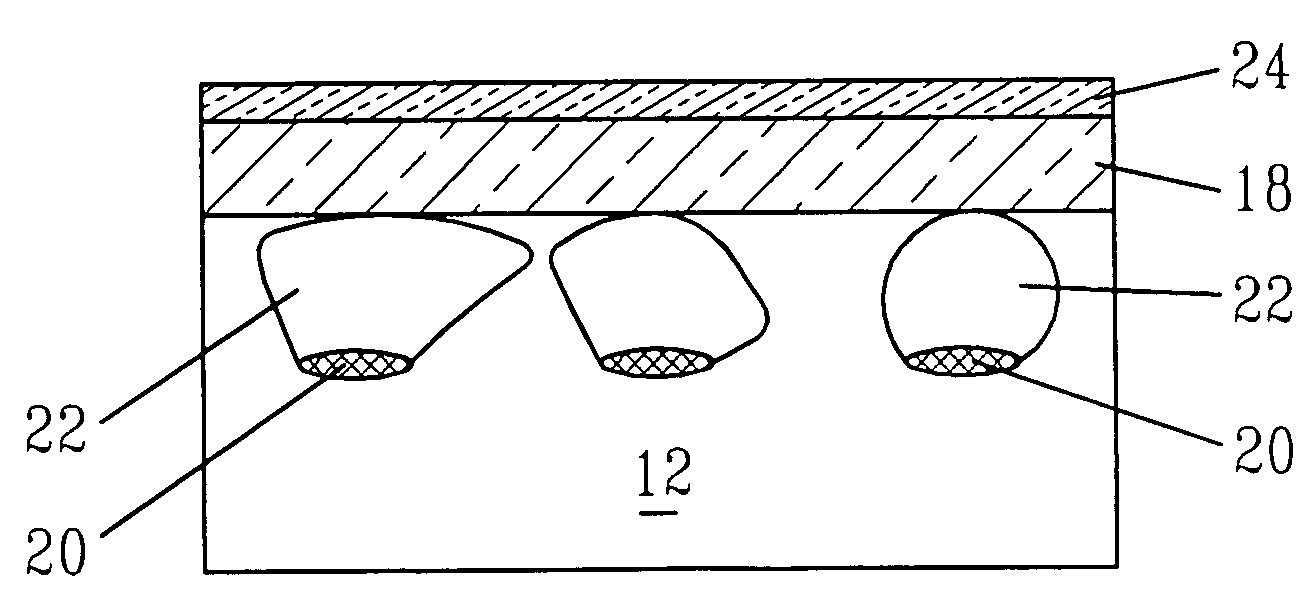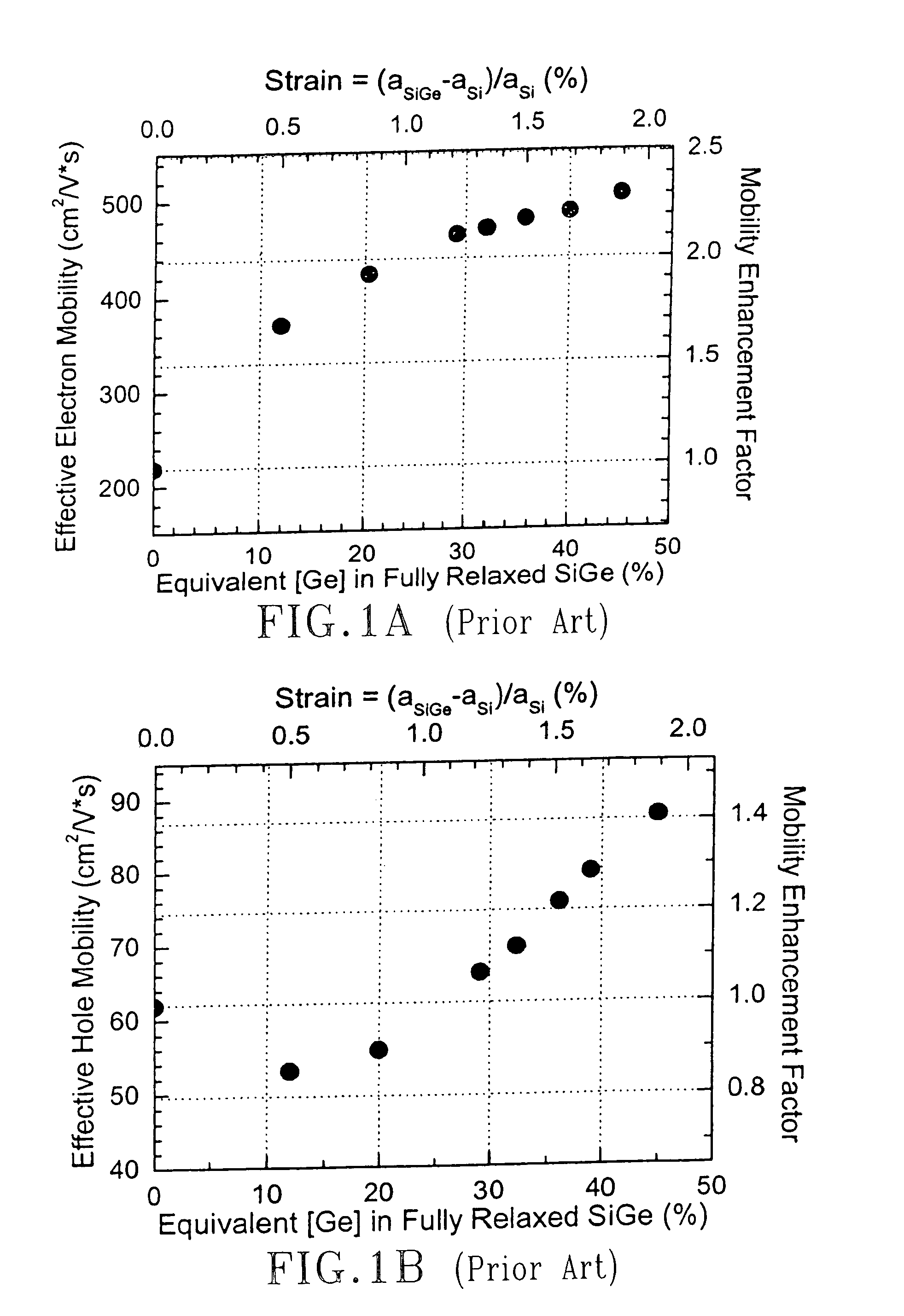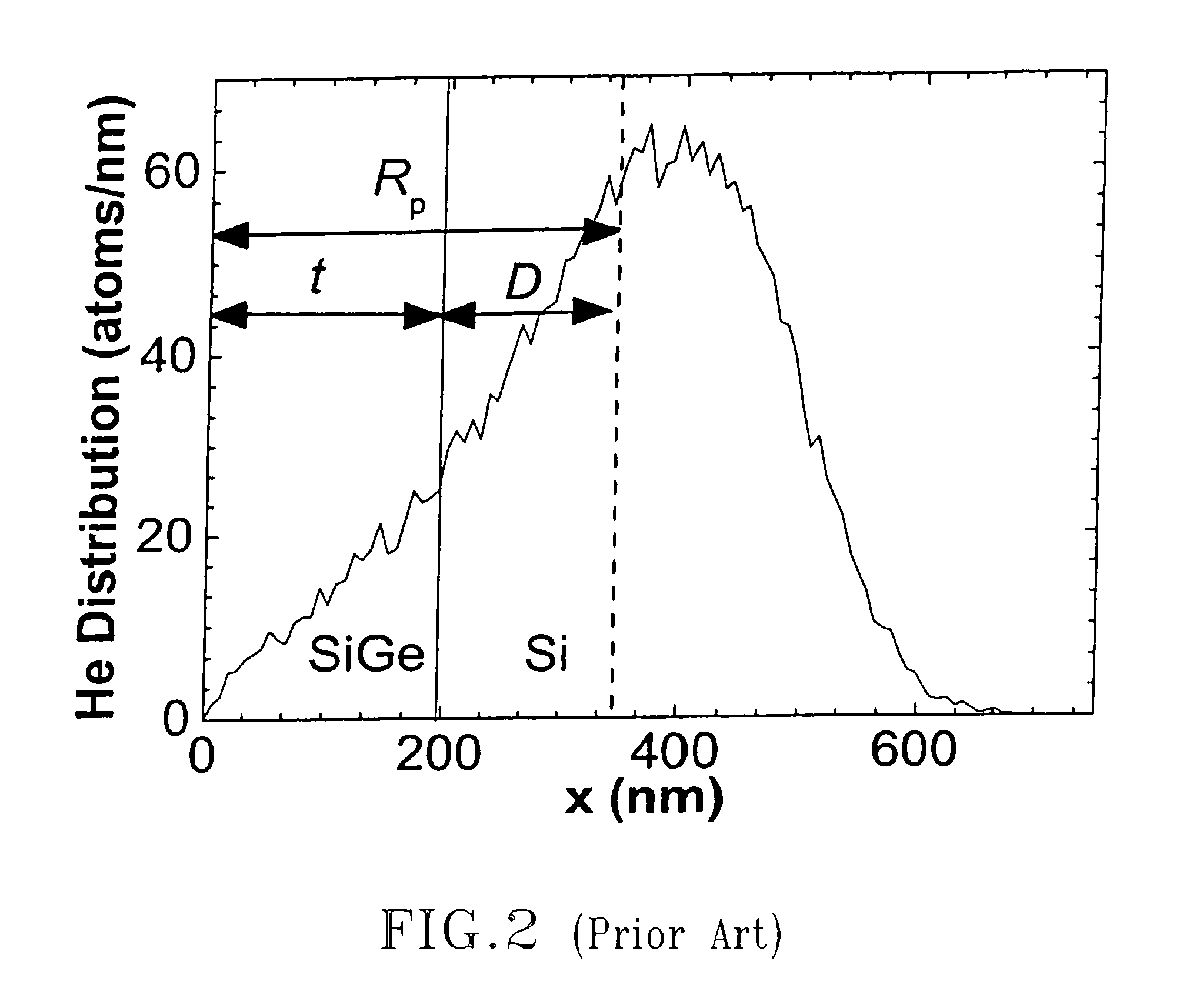Hetero-integrated strained silicon n- and p-MOSFETs
a technology of strained silicon and pmosfets, applied in the field of strained silicon nand pmosfets, can solve problems such as degrading device performan
- Summary
- Abstract
- Description
- Claims
- Application Information
AI Technical Summary
Benefits of technology
Problems solved by technology
Method used
Image
Examples
first embodiment
[0041]In the present invention, the light atoms are implanted across the entire area, i.e., surface, of the Si-containing substrate 12. The ion implant can be performed utilizing standard ion implant tools that are well known to those skilled in the art.
[0042]Next, and as shown in FIG. 4B, a strained SiGe alloy layer 16 is formed atop the surface of the Si-containing substrate 12 that includes the damaged region 14. By ‘strained’, it is meant that the SiGe alloy has a compressive or tensile stress associated therewith. The strained SiGe alloy layer is a nearly pseudomorphic or strictly pseudomorphic Si1−xGex material in which x (the mole fraction of Ge) is uniform and is from about 0.01 to about less than 1, preferably x is from about 0.15 to about 0.40, or a graded composition in which x increases from 0 at the surface of the Si-containing substrate 12 to higher x values (typically ranging from about 0.01 to less than about 1) at the upper regions of the SiGe alloy layer 16.
[0043]T...
fourth embodiment
[0062]the present invention is shown in FIGS. 7A-7D. This embodiment begins by providing the structure 50 shown in FIG. 7A. As shown, the structure 50 includes Si-containing substrate 12 having discrete and isolated damaged regions 14 located therein. The structure shown in FIG. 7A is the same as that shown in FIG. 5A; therefore the processing described above in regarding to FIG. 5A is applicable here for this embodiment of the present invention. Specifically, a masked ion implantation process is used to create the structure 50 shown in FIG. 7A.
[0063]Next, and as shown in FIG. 7B, areas of strained SiGe alloy 16 are selectively grown atop of the Si-containing substrate 12 in those regions that lay above the discrete and isolated damaged regions 14. The selective growth of strained SiGe alloy 16 can be achieved by either utilizing the same or different patterned mask as that used in forming the discrete and isolated damaged regions 14 within Si-containing substrate 12. The growth of ...
second embodiment
[0068]In the second embodiment, p-MOSFETs are fabricated atop the unstrained regions 56 of semiconductor layer 52, while n-MOSFETS are fabricating atop the strained regions 54 of semiconductor layer 52.
PUM
| Property | Measurement | Unit |
|---|---|---|
| temperature | aaaaa | aaaaa |
| temperature | aaaaa | aaaaa |
| biaxial tensile strain | aaaaa | aaaaa |
Abstract
Description
Claims
Application Information
 Login to View More
Login to View More - R&D
- Intellectual Property
- Life Sciences
- Materials
- Tech Scout
- Unparalleled Data Quality
- Higher Quality Content
- 60% Fewer Hallucinations
Browse by: Latest US Patents, China's latest patents, Technical Efficacy Thesaurus, Application Domain, Technology Topic, Popular Technical Reports.
© 2025 PatSnap. All rights reserved.Legal|Privacy policy|Modern Slavery Act Transparency Statement|Sitemap|About US| Contact US: help@patsnap.com



